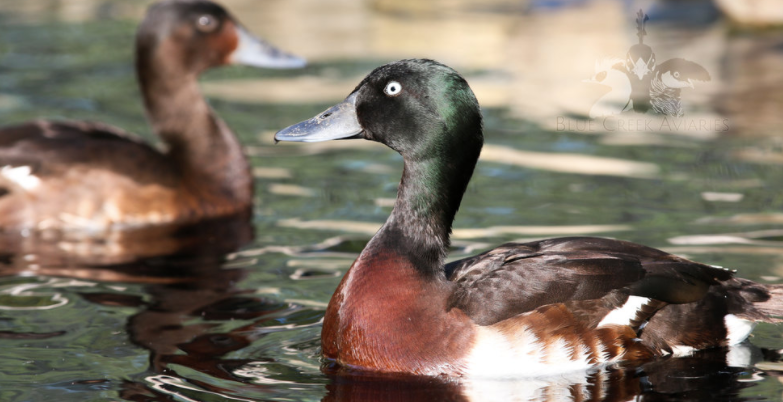The Blue Beak: Baer's Pochard
- Austin Chen

- Oct 30, 2020
- 2 min read

Introduction & Physical Appearance
The Baer's pochard (Aythya baeri), a migratory duck, used to be widespread in northeast China and eastern Russia, where it would breed, and in central and southeast Asia, where it would migrate for the winter.

Both sexes have a dark head that has a green gloss in good lighting, but which usually appears dark brown or black. Boldly patterned chestnut-and-white sides unique among ducks; compare the brown sides of Ferruginous Duck and pale sides of Common Pochards, both similar species. During the colder months, often found singly or in small groups within non-breeding flocks of more common duck species. Breeds on sheltered, well-vegetated lakes; prefers large open bodies of water in the winter.
As part of the group known as “diving ducks”, their legs are set far back on their bodies to help propel them underwater as they dive to the bottom of lakes and rivers to feed.
Due to wetland development and uncontrolled hunting, there are more of these critically endangered ducks in zoos and private collections than in the wild.
Habitat
Lakes and flooded meadows near woods
Diet
Insects
Mollusks
Shrimps
Fish
Algae
Aquatic plants
Seeds

Present Circumstances
Baer’s pochard have been classified as Critically Endangered by the IUCN in 2012 due to an acceleration in the decline of their population. There are an estimated 150-700 individuals left in the wild based on recent data. Baer’s pochard suffer from hunting threats and wetland destruction. They are listed on CMS Appendix II and are legally protected in Russia, Mongolia, and certain provinces of China. Regardless, these ducks are in dire need of attention. Although scarce in captivity, Baer’s pochard are available to aviculturists to establish a breeding population in captivity, as they are not a particularly challenging species to raise. The conservation of Baer’s pochard is today’s project—it cannot be put off for the future. I thoroughly enjoy this species and would recommend them to others with some duck experience.

Thank You!
I would like to give a shout-out to some of the major collections breeding Baer’s pochards in the U.S., such as Sylvan Heights Bird Park, Pinola Conservancy, and Livingston Ripley Waterfowl Conservancy. I would also like to thank everyone else in the private sector who is taking part in the preservation of this species.
Sourced From/More Information:
Images & Article 1: https://ebird.org/species/baepoc1
Images & Article 3: https://www.bluecreekaviaries.com/baers-pochard
Article 4: https://tulsazoo.org/animal/baers-pochard/





Comments